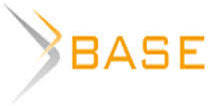Croston's method in the modification of Syntetos and Boylan for forecasting inventories
This paper discusses the problem of forecasting the demand for spare parts for medical equipment using the original Croston method in the modification of Sintetos and Boylan. Forecasting in inventory management for products for which demand is unstable is the main problem, both in the production and in the search for spare parts for equipment under operating conditions. Croston's method is not fully reliable, due to the restrictions imposed. In this regard, forecasting methods associated with its modification are of particular relevance. In the present work, a modification of Sintetos and Boylan is considered with reference to forecasting the demand for spare parts for medical equipment. In contrast to the original method, a modified formula is used in the work, in which the interval between the cases of replacement of parts is excluded, and the smoothing parameter is used, and therefore the formula acquires the greatest accuracy. The presented formula was tested as a result of using experimental data. In conclusion, the obtained data is compared with the data obtained by the usual Croston method.

















While nobody left any comments to this publication.
You can be first.
1. Melnikova, O.A., (2018). The model for forecasting the need for nonfoods on the example of medicines. Scientific bulletin of Belgorod State University. Series: Economy. Informatics. 2018. Vol.45. №1. P. 86-92. (in Russian)
2. Ivanko, R.S., (2005). Forecasting intermittent demand: theory and practice of calculations// Economy and Finance No. 12. M.: FNP. (in Russian)
4.Croston J. D., (1972). Forecasting and stock control for intermittent demands,” Operational Research Quarterly, vol.23, no.3, pp.289-303, 1972.
5. Croston J. D., (1996). Croston’s method comment,” International Journal of Forecasting, vol.12, no.2, pp. 297-298, 1996.
6. Johnston F. R, Boylan J. E. and Shale E. A., (2003).“An examination of the size of orders from customers, their characterization and the implications for inventory control of slow moving items,” Journal of the Operational Research Society, vol.54, no.8, pp.833-837, 2003.
7. Syntetos,A.A.,Boylan, J.E., (2001) On the bias of intermittent demand estimates. Int. J. Prod.Econ.71(May(1–3)), 457–466. - 2001.
8. Syntetos A. A.and Boylan J. E., (2010). “On the variance of intermittent demand estimates,” International Journal of Production Economics, vol.128, no.2, pp.546-555, 2010.
9. Syntetos A. A, Boylan J. E.and Croston J. D.,, (2005). “On the categorization of demand patterns,” Journal of the Operational Research Society, vol.56, no.5, pp.495-503, 2005.
10. Johnston F. R. and Boylan J. E., (2010). “Forecasting intermittent demand: A comparative evaluation of Wallstrom P. and Segerstedt A., “Evaluation of forecasting error measurements and techniques for intermittent demand,” International Journal of Production Economics, vol.128, no.2, pp.625-636, 2010.
11. Shale, E.A.,Boylan,J.E.,Johnston,F.R., (2006). .Forecasting for intermittent demand: the estimation of an unbiased average.J.Oper.Res.Soc.57,588–592. 2006.
12. Teunter,R.H.,Syntetos,A.A.,Babai,M.Z., (2011). Intermittentdemand: linking forecasting to inventory obsolescence. Eur.J.Oper.Res.214(3),606–615.2011.
13. Rao A.V. , (1973).“A comment on ‘Forecasting and stock control for intermittent demands’,” Operational Research Quarterly, vol.24, no.4, pp.639-640, 1973.
14.Willemain T.R., Smart C.N., Shocker J. H. and De Sautels P.A., (1994). “Forecasting intermittent demand: A comparative evaluation of Croston’s method,” International Journal of Forecasting, vol.10, no.4, pp.529-538, 1994.